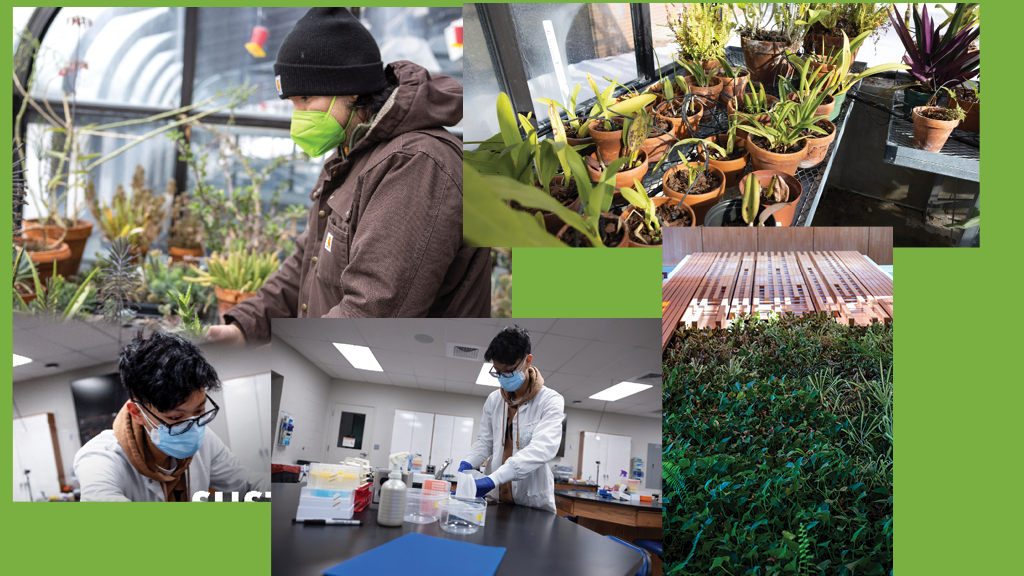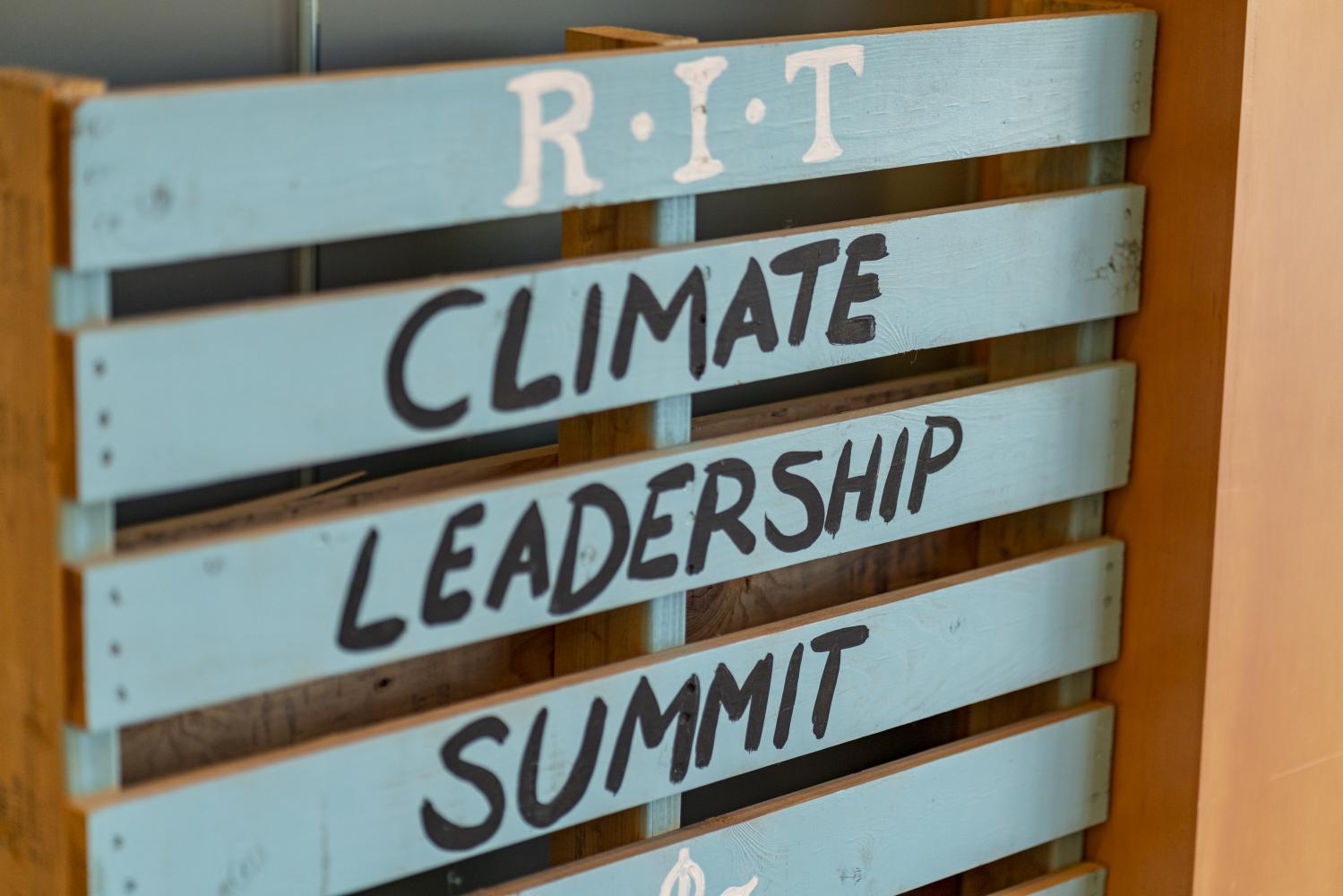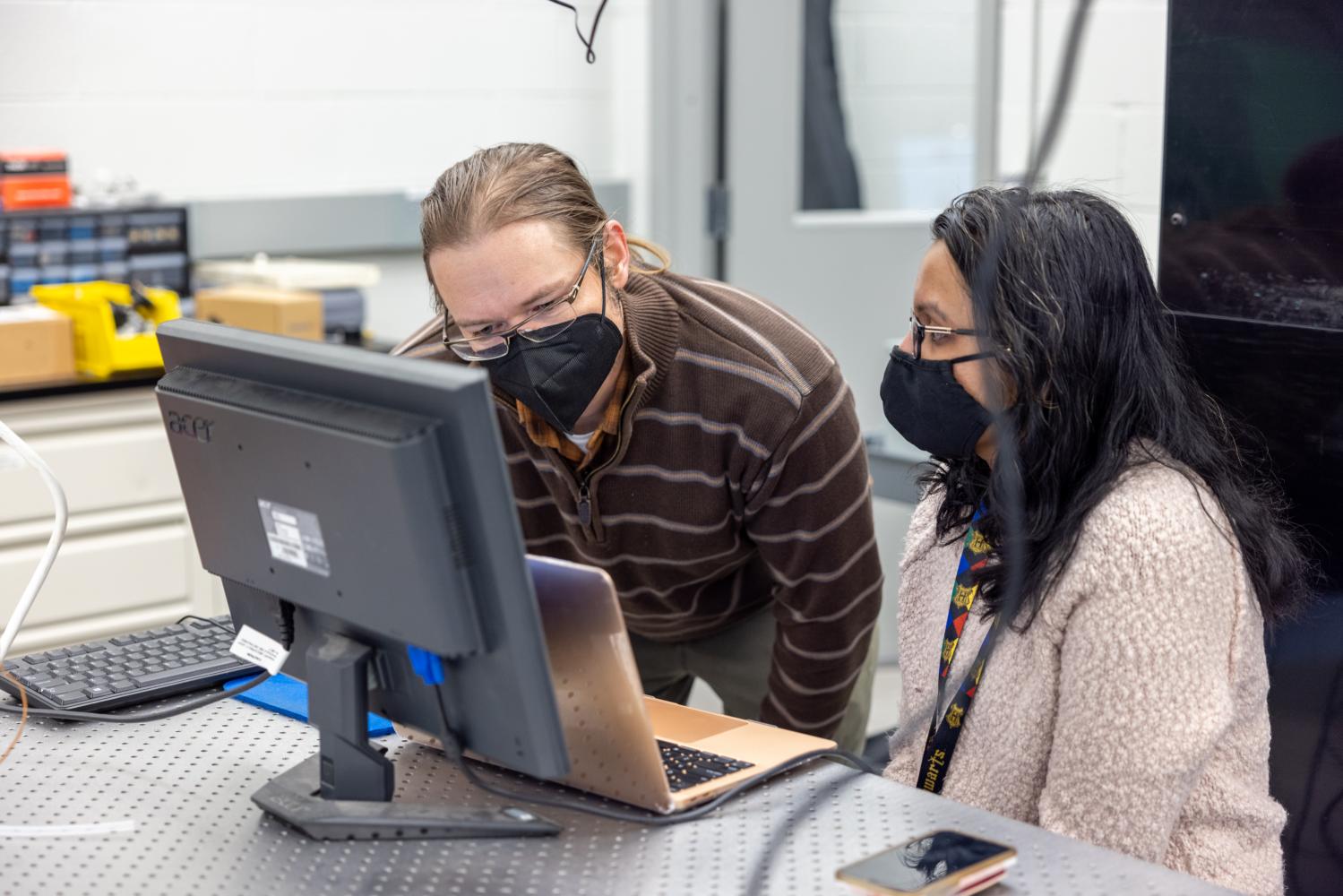The current world population of over 7.8 billion people means more than 7.8 billion human bodies require food, warmth, shelter and education.
However, environmental efforts on campus can help to achieve sustainability, a goal toward which RIT aims many of its own efforts.
Sustainability and the Human Race
Environmental sustainability is the way that humans conserve resources today so future generations can thrive. The resources that humans depend on for survival are finite, and therefore must be used wisely to last in the long term.
As consumerism and the modern economic system continue to barrel towards polluting emissions and consumption of resources, the current trajectory of human sustainability seems less than ideal.
Assistant director for Campus Sustainability at RIT, Neha Harshita Sood, spoke of the impact sustainability has on the human race.
“[With] environmental sustainability, and sustainability in general, it’s important to make sure that human beings have what they need to survive,” she said.
The benefits that humans reap from sustainability don’t solely revolve around caring for the planet. A planet with no air pollution means people have clean air to breathe. A planet in which plastic does not pollute oceans means higher-quality fish for people to eat.
“A healthy planet means healthy people,” Sood stated.
“A healthy planet means healthy people."
Campus Sustainability Commitments
Sustainability research at RIT focuses on its commitments to supporting students’ growth without further harming the planet.
“The greenest building is the one you don’t build,” Sood said. “But being an educational institution, we do need infrastructure.”
Many of RIT’s sustainability goals lay in its Climate Action Plan, which commits to being carbon neutral by 2030 and fossil fuel free by 2045. The plan also seeks to make sure that new buildings on campus don’t add more to its carbon footprint, offset carbon emissions wherever possible, use solar and wind energy and renewable sources and reduce consumption of water among other strategies for climate resilience.
Many clubs at RIT focus their efforts on promoting sustainability. The RIT Beekeeping Club seeks to do so by educating people on the importance of bees and other pollinators.
Fourth year International and Global Studies student, Emma Eagen, is the current president of the club as of 2022.
“Bees are a great example of how interconnected we are in terms of the environment and us as people,” Eagen said.
The club maintains the honeybee hives on campus as well as those at the Rochester Science Center and Museum by engaging in sustainable practices. For example, they make candles and reusable wax wraps by melting off beeswax caps.
It is important to note that honeybees are however, less effective at pollination than wild bees, and in many cases push wild bees out of an area. Thus, the entire bee community must be protected in order to achieve high quality pollination.
“One-third of the crops grown in the U.S. are pollinated by bees,” Eagen added. “It’d be a much more colorless world without bees ... and it would be a much less tasty world when it comes to bees due to those crops.”
Eagen also discussed the importance of learning more about the process of food production.
“Talking about how those crops are pollinated by bees, talking about the energy that goes into actually growing the food that we’re eating ... it’d be cool if the campus pushed a little bit more of being thoughtful about where the food that we’re eating is coming from,” Eagen explained.
Food Waste and Fashion
To help combat food waste, RIT Sustainability partners with Dining Services to work on providing students with healthy, locally sourced meals that also support the local economy.
"We're looking into all kinds of projects associated with education around food choices and diets," Sood said.
RIT has now made a commitment to composting food waste as well.
Starting this year, a new law went into effect in New York State where producers of large amounts of food waste must compost and donate excess food to area distribution centers. As a result, Dining Services plans to divert extra food from landfills to such centers.
In the future, RIT plans to have an onsite composting operation to which food scraps and napkins, along with other compostable waste from Dining Services — pre-consumer and post-consumer alike — will be sent.
“Anything that’s left over on your plate after you’re done eating, that’s considered post-consumer,” Sood explained. “That wasn’t being composted before ... but now it will be. That’s definitely a big win.”
Certain wellness courses offer to cover sustainability topics, such as "Maple Syrup and Our Environment," which teaches students about the maple sugaring industry and the threat it faces from climate change.
RIT Sustainability will partner with the Center for Leadership and Civic Engagement for an event called the Coffee Crawl as well. The event seeks to educate people about the amount of water and energy that coffee beans use to grow, while encouraging coffee drinkers to think more about where the beans were grown, who grew them and how those coffee growers were treated.
Fashion and clothing are another aspect of sustainability that hits closer to home than many expect.
RIT recently joined the Fair Labor Association, meaning that all clothing such as uniforms for RIT staff, trademark licensing and athletic apparel must abide by fair labor practices.
In 2012, unsafe working conditions led to the deaths of 52 people after a garment factory burned down in Bangladesh — a country in which more than 150 fire and safety incidents between 2012 to 2019 have been linked to its garment industry.
“For all we know, they could have been making clothes that came to a university in the United States,” Sood said.
With its additional effects on greenhouse gas emissions, clothing can have as much of an impact on the environment as campus facilities do.
Greenhouse Facility
Andre Hudson, department head of the Thomas H. Gosnell School of Life Sciences, discussed the greenhouse facility on campus and its impact on sustainability.
“What we have is a form of a sunroom,” he said. “One of the things it affords us is it exposes students to plants, biology or applied sciences, etc.”
Greenhouses magnify sunlight to protect plants against freezing temperatures. When it comes to food production, greenhouses provide a key sustainability effort.
“In literature, we refer to this as seven plus two equals nine,” Hudson stated.
Currently, about eight billion humans exist. The United Nations predicts that the population will increase by another billion, totaling about nine billion people in the world by 2050.
The expected increase in the human population begs more questions for students to explore.
“How do we prevent plant pathogens from destroying 80 percent, 90 percent of crops on a yearly basis?” Hudson said. “How do we genetically engineer plants to withstand drought with respect to climate change?”
Community Garden
The Community Garden on campus also focuses on sustainable agriculture and is run by a small group of volunteers.
On Fridays from 3:00 to 5:00 p.m., the Garden runs a workshop series during which anyone can visit, get their hands dirty and learn how to grow and harvest crops.
Sood pointed out the way many people remain out of touch with how food is grown.
“Picking a fresh cherry tomato from a plant in the community garden and popping it in your mouth, it’s like eating candy,” she said. “It’s so delicious. It’s so good for you.”
“Picking a fresh cherry tomato from a plant in the community garden and popping it in your mouth, it’s like eating candy."
Compared to the ones grown in the Community Garden, vegetables that may have been shipped to the campus over the course of days likely arrive with lowered nutritional values or contain pesticides and chemicals to maintain their freshness.
“The value of teaching students, faculty and staff how to grow your own food is priceless,” Sood stated.
The Community Garden incorporates food justice as well, diverting any extra vegetables to the FoodShare program and into the hands of people in need. Oftentimes, food pantries and food justice organizations face difficulties when delivering high quality food to people.
“In Rochester, for example, we have a food desert,” Sood said. “People don’t necessarily know where their next meal is coming from, like chronic food insecurity.”
On the other hand, food swamps indicate neighborhoods inundated with low-quality processed food that may be high in sugar, low in fiber or protein and possibly linked to an increase in diabetes and heart issues.
Sood also denounced the myth that high quality food cannot grow in Rochester due to its cold weather.
“Western New York, this area, has a lot of agricultural land,” she said. “We have some of the best soils anywhere.”
Although humans’ carbon footprint from food systems remains high, farming and gardening hold potential for a climate solution. Increasing carbon sequestration in soil can raise its productivity, reducing the need for fertilizer and helping to offset carbon emissions.
For the first time, the campus plans to construct a flower garden to help attract more pollinators such as bees, butterflies and birds. Along with this aspiration comes the hope of students cutting flowers to give to others.
Student Research Efforts
In addition to campus facilities, students conduct different research efforts for campus sustainability that span across a variety of topics.
“A lot of learning happens at every level at RIT that helps us achieve sustainability goals, here and beyond,” Sood said.
Many students of the Golisano Institute for Sustainability, for example, conduct research within the realm of batteries and electronic waste.
Environmental Sciences students research conservation and plastic pollution in both land and aquatic environments.
Although it may not seem directly related to sustainability at first, antibiotic research is another impactful research topic on campus.
“A lot of times, sustainability is equated to environmental issues but it’s also human health-related issues,” Dr. Hudson stated.
Antibiotic research can lead to the research of novel antibiotics in order to solve pharmaceutical problems of the future. Through learning how to sustain and augment current health practices, such research contains the potential to prevent future disease outbreaks.
“We are change makers at RIT and our culture is about trying to create a better place ... a world that we all want to live in,” Sood said.
Many student groups dedicate their efforts towards campus sustainability and beyond, including Engineers for a Sustainable World, RIT Vegan Club, Electric Vehicle Team and Student Government Sustainability Committee.
Sustainability and environmental change happens at every level, including as an individual, community and world. Every action has an impact on the environment, whether positive or negative.
Sood discussed education as yet another key component to sustainability and how the conversation of sustainability at RIT has evolved over time.
“As a higher-ed institution, it is our responsibility to not only educate students about a changing world, but also ourselves,” Sood said.
As far as the future of sustainability efforts, there will never be a shortage of work to do, both on and off campus.
“We’re all part of a system,” Sood continued. “No system is perfect.”
“We’re all part of a system ... No system is perfect.”
Students can further contribute to campus sustainability by joining student organizations and continuing to educate themselves on opportunities for sustainability.
The Goodbye, Goodbuy initiative serves as another example of a student-run program on campus. On average, 35 tons of waste used to accumulate at the end of the year as students moved out. By collecting and selling these goods in the fall, the team prevents usable items from ending up in landfills.
“I would love for every student that graduates from RIT to have heard of and learned about the sustainable development goals or our climate action plan, or leave here with an understanding of how they can help create a better place in this world,” Sood explained.
A Jar of Honey
Sustainability efforts can fit into the lives and passions of all students, regardless of their majors, passions, hobbies and careers.
“More recently, we started feeling like it was a lost cause or that there isn’t anything we can do, but there is,” Sood said.
Though the urgent need for sustainability may seem daunting, dedicating small efforts to sustainability can make a large difference.
On a similar note, bees put in hundreds of hours of work before they are able to fill a single jar of honey.
“In her lifetime, a single bee will make one-twelfth a teaspoon of honey,” Eagen said. “A jar of honey is such a cool symbol of how small, persistent efforts add up, and I think as people we forget that pretty easily.”












